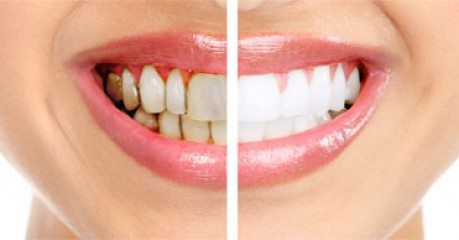The term gum disease – or periodontal disease – describes bacterial growth and production of factors that gradually destroy the tissue surrounding and supporting the teeth. “Periodontal” means “around the tooth.”
Gum disease begins with plaque, which is always forming on your teeth, without you even knowing it. When it accumulates to excessive levels, it can harden into a substance called tartar (calculus) in as little as 24 hours. Tartar is so tightly bound to teeth that it can be removed only during a professional cleaning.
Gingivitis and periodontitis are the two main stages of gum disease. Each stage is characterized by what a dentist sees and feels in your mouth, and by what’s happening under your gumline. Although gingivitis usually precedes periodontitis, it’s important to know that not all gingivitis progresses to periodontitis.
In the early stage of gingivitis, the gums can become red and swollen and bleed easily, often during tooth brushing. Bleeding, although not always a symptom of gingivitis, is a signal that your mouth is unhealthy and needs attention. The gums may be irritated, but the teeth are still firmly planted in their sockets. No bone or other tissue damage has occurred at this stage. Gingivitis can be reversed in nearly all cases when proper plaque control is practiced,” consisting, in part, of daily brushing and flossing.
When gingivitis is left untreated, it can advance to periodontitis. At this point, the inner layer of the gum and bone pull away from the teeth (recede) and form pockets. These small spaces between teeth and gums may collect debris and can become infected. The body’s immune system fights the bacteria as the plaque spreads and grows below the gumline. Bacterial toxins and the body’s enzymes fighting the infection actually start to break down the bone and connective tissue that hold teeth in place. As the disease progresses, the pockets deepen and more gum tissue and bone are destroyed.
At this point, because there is no longer an anchor for the teeth, they become progressively looser, and the ultimate outcome is tooth loss.
Signs and Symptoms
Periodontal disease may progress painlessly, producing few obvious signs, even in the late stages of the disease. Then one day, on a visit to your dentist, you might be told that you have chronic gum disease and that you may be at increased risk of losing your teeth.
Although the symptoms of periodontal disease often are subtle, the condition is not entirely without warning signs. Certain symptoms may point to some form of the disease. They include:
- Gums that bleed during and after tooth brushing
- Red, swollen or tender gums
- Persistent bad breath or bad taste in the mouth
- Receding gums
- Formation of deep pockets between teeth and gums
- Loose or shifting teeth
- Changes in the way teeth fit together on biting, or in the fit of partial dentures
Even if you don’t notice any symptoms, you may still have some degree of gum disease. Some people have gum disease only around certain teeth, such as those in the back of the mouth, which they cannot see. Only a dentist or a periodontist – a dentist who specializes in gum disease – can recognize and determine the progression of gum disease.

